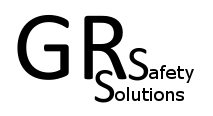Title Page
-
Conducted on
-
Technician Name
-
FSP performing the Service
-
Prepared by
-
Location
-
This section is about establishing where you are for the audit. You should not be auditing HV . if you are . stop the Audit until you have established that you have an HV tech on site . if you aren't signed off yourself leave
-
FSP
-
Tech
-
Audit location
-
Date and Time of Audit
-
ICP
-
Category of Site
-
Before photo of site
Joint Job safety analysis
-
This is a Joint Safety analysis. Once you are Auditing Cat 2 and above you must engage with the Agent and discuss the hazards on site. Key hazards include Exposure to Electricity , Mechanical hazards, Gas hazards, Distraction, and control of the site. If you are not happy with what is discussed stop the audit
-
Do you have appropriate PPE
-
10 cal minimum overalls
-
safety glasses
-
Safety boots
-
Hard hat if required
-
Are all hazards identified and managed adequately
-
How is exposure to live electricity managed ****Primary hazard*****
-
Site control in place?
-
Fire fighting measures in place
- fire blanket
- fire extinguisher
-
Emergency egress plans in place
- Assemby for Earthquake
- Where is help located
- where is first aid kit
- where is fire extinguisher
- where is communication device
- where is assembly point if there is an incident
- what is the physical location
-
Safe to start
Site Confirmation
-
This section is about the tech arriving at site and making sure they are at the right ICP on the site
-
Door stop protocol used
-
Site induction occurred
-
Technician confirms meter is the correct meter by
- ICP label
- Does not confirm
- Address
- Meter serial number
- meter location details
Hazard Analysis
-
This section is where there is an assessment of how complete the technicians hazard assessment is.
This is where we capture how great the tech is at identifying hazards and awareness of hazards
If you believe the hazard analysis not sufficient consider stopping the job and escalating if there is risks involved -
Hazard analysis documented
-
Hazard analysis identifies nearest live points
-
Hazard analysis identifies environmental hazards
-
Hazard analysis identifies fire fighting hazards (halon units)
-
Hazard analysis identifies customer hazards
-
Hazard analysis identifies site hazards
-
Hazard analysis identifies trip slip fall hazards
-
Hazard analysis safe and fit for purpose
-
Expiry date of Gloves
-
Expiry date Fire Extinguisher
-
Expiry date First aid kit
-
Expiry date ladder
Metrology audit
-
This section is about how well the technician assesses the site for metering non conformances prior to starting the site. The tech should be able to work out what is present so that they can complete the works order correctly
-
Un-metered load checked for
-
Voltages present on meter
-
Currents present and in correct orientation
-
Test block links correctly orientated
-
Tech is aware of metering on site and how it works
-
Tech is aware of what needs to be changed to achieve required metering outcome
work assessment
-
This section is where we assess the competence and ease of the overall job. Note Cat 2 and above sites can be quite individual so there may be a few pauses through out the job as the tech assesses the work . This is a good thing.
-
Technician is fluid and un flustered in the way he works
-
Tech is proficient with tools and techniques
-
Tech is proficient with process
-
Technician is proficient with tests and accuracy
-
Tech requires additional training
-
Tech requires retraining
-
Work ons required
Site access control
-
The ESR make it mandatory to put up signage when prescribed electrical work is taking place . We also need to see barriers put in place to protect the general public when switchboards are currently open
-
Electrical signage used
-
Barriers put in place to control public access
-
Site control zones told to Auditor
-
Site control plan and execution safe. If it isn't going to be safe stop job and discuss
Work process
-
This section is about assessing how the technician completes the work. this is supportive evidence that shows that the tech is doing a great job. find and show evidence to show the techs success.
-
How does the tech progress through the job
- The tech progresses through the work in a logical progression
- The tech works calmly and quietly with haste
- The tech stops and reassesses when the results dont meet the requirements
- The technician shows awareness of accuracy
- The technician works safely with confidence
- The tech rushes and is haphazard
-
Does the Technician show fluidity in his work processes
- The technician works at a consistant pace appropriate for the work
- The technician is familiar with the work tasks and proceeds through the work tasks
- The technician referrs to his procedure when required
- the technician is not at an acceptable standard
- Technician can talk the Auditor through what steps are underway
-
Does the technicians standard of work look acceptable
Testing
-
Testing for Safety and testing for accuracy is very important . If the testing for Safety does not occur or is completed in an unsafe way you must stop the job and discuss your concerns, arrange for the site to be made safe and tech must be escalated.
-
Testing for safety
- Testing to prove test equipment
- Test to assess de energised
- no testing completed
- Prove test equipment
- testing to identify nearest live point
-
testing for accuracy
- Burden
- Ratio
- Primary to secondary ratio
- Compative Certification
- half hour load check
- Enviromental Testing
- phase angle testing
- ed phase/omicron
- meter function testing complete
-
Testing is completed to required standard
Data services interaction
-
In a C&I audit the tech must ring data services to complete a half hour load check . We are measuring is the tech accurate with his information and are they polite
-
Technician polite and appropriate
-
Data services contacted
-
Technician accurate with his answers
Electrical certification
-
Electrical certification for a non whole current site is an ESC where the equipment is replaced like for like . COC is required if you are adding new or additional items to an existing site. Note this would include running a circuit to power up a new modem. ROI is required for mains work so in practice that is the big conductors that run to the premise not the CTS nor metering.
-
What certification required
- ESC
- COC
- ROI
-
What Certification took place
- ESC
- COC
- ROI
- None
- NA
-
Correct certification happened
-
Photo of certification
EIPC certification and Sealing
-
This section is about seals,sealing and stickers has the tech done what is required
-
Seals applied to meter
-
Seals applied to testblock
-
Meter potential fuses sealed
-
Load control sealed if any
-
Bus bar fuses sealed
-
CTs sealed
-
Component stickers applied (meter/cts/load control device)
-
Leaving the site and Equipment restoration
-
This section is about the tech leaving site after completing the service . The expectation is this is a reverse of attending site. the tech should notify the customer he is leaving site sign out after restoring the site to the condition it was prior to attending
-
Site tidy
-
all equipment back in service
-
Customer informed of leaving site
Tooling
-
This section checks that the tech has adequate tooling to complete the service successfully. Success is measured by the results the technician gathers is sufficient to correctly apply certification to the site. This includes measuring the site environmental conditions. The auditor should ensure that you are capable of measuring that the gross values expressed are within an expected range for the environmental conditions
-
Technicians hand tools are suitable for task at hand
-
Environmental condition monitoring equipment used (you should see something that can at least measure temperature accurately) Compare with auditors device (kestrel/weather flow /sky watch )device
-
Torque wrench is calibrated
-
Torque screw driver used and calibrated
-
Technicians equipment is calibrated volt meters Current devices Portable working standard
-
photograph portable working standard
Site calculations
-
In this section we are assessing the site calculations that commonly occur as part of the work . For the techs that use PDA or Laptop computers this may be done in a pre formatted template. The technician should be aware of what is being inputted and what constitutes a passed result and what is a bad result. For Bad results the tech should be able to describe the resolution.
-
Burden
-
CT ratio
-
VT ratio
-
Billing compensation factor
-
Uncertainty
-
Is there a sticker with the correct billing compensation factor applied to the meter.
Vehicle checks
-
This section is about the safety of the installer and the gear during the transport phase.
-
Wof
-
Registration
-
Road user charges
-
cargo barrier
-
fire extinguisher
-
first aid kit
-
Vehicle defects
-
Vehicle appropriate for use
-
Photo of vehicle
-
vehicle tidy
Audit closure
-
Take photo of completed work
-
Did the tech achieve the outcome required of the works order
-
Was the work completed safely
-
Was the Metrology outcome achieved
-
Audit result Outcome
-
Auditor Signature
-
Closure time











